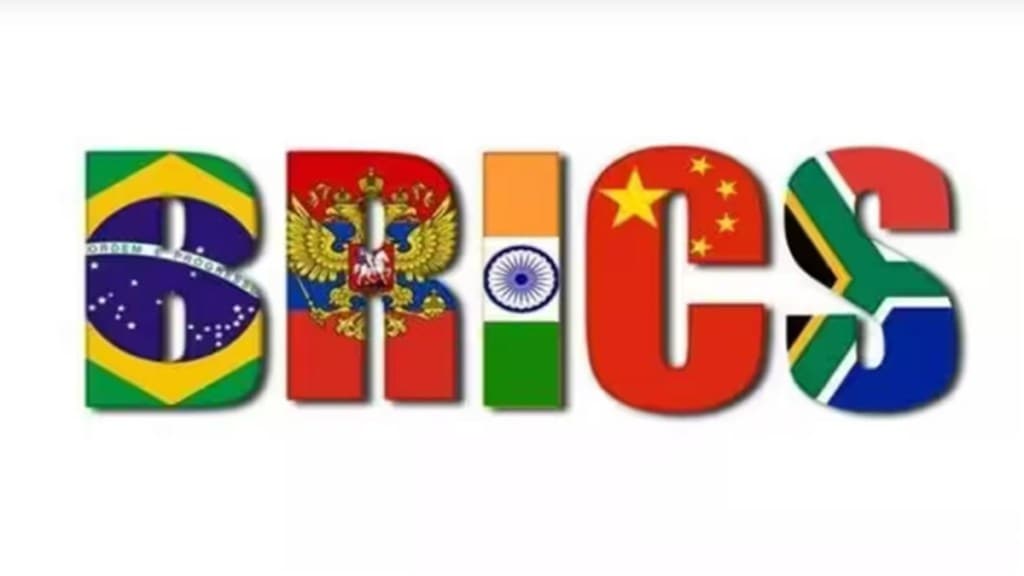The 15th BRICS Summit at Johannesburg held during 22-24 August 2023 announced an expansion in its membership. Some opinions suggest a bigger BRICS can develop into a much stronger strategic global entity than what it is right now. These opinions also indicate that over time the BRICS can become a key ‘pole’ in a rapidly reorganizing multipolar world order. For being so, the BRICS must sizably enlarge its economic power to be in the same league as the G20 and G7.
The new entrants
Six more countries have been added to the current BRICS club that includes Brazil, Russia, India, China, and South Africa. The new members are Argentina, Egypt, Ethiopia, Iran, Saudi Arabia and the United Arab Emirates (UAE). They will become full members of the BRICS from January 1, 2024. With these new members, the BRICS has acquired a more inclusive ‘Global South’ look.
Expanding the BRICS was formally proposed by China during its Presidency of the group last year. Adding more members to a group comprising the world’s most populous and large emerging markets can generate additional economic opportunities for both existing and new members.
But China’s proposal also generated concerns. A China-led expansion of the BRICS cannot overlook worries of it feeding into China’s interests of stitching together a coalition of allies for counterbalancing the US and its partners.
In the run-up to a meeting for discussing the expansion held at Cape Town in early June 2023, it was noted that 13 countries had formally applied for joining the BRICS while six more had informally done so.
Saudi Arabia and Iran were formal applicants and have been inducted. Egypt and the UAE were also expected to be included as both are members of the New Development Bank (NDB)—the flagship financial institution of the BRICS. It is surprising that Bangladesh, a member of the NDB since September 2021, was not formally added to the BRICS. Uruguay, a prospective NDB member, has also not been included. Latin America’s presence, however, has been expanded by the entry of Argentina. The African presence has been boosted by inclusion of Ethiopia and Egypt.
The most geo-economically significant aspect of the expanded membership comes from the triad of Iran, Saudi Arabia, and the UAE. The three Gulf economies, along with Russia and Brazil, greatly enhance the ability of the BRICS to play a significant role in global energy and resource markets.
This notable inclusion is in contrast with the continuing absence of some of the world’s prominent emerging market industrial economies from the group. These include emerging markets from Southeast Asia (e.g., Indonesia, Malaysia, Philippines, Thailand) and Europe (Hungary, Poland, Turkey).
Small economic size
Even after expanding, the economic size of the BRICS has not experienced a substantial increase.
The BRICS’s current economic heft is overwhelmingly on account of China, the world’s second largest economy, followed by India, the fifth largest. Between them, China and India contribute $23 trillion to the economic size of the BRICS. Brazil and Russia, the world’s 10th and 11th largest economies by market size, account for $5.5 trillion.
The remaining seven BRICS members, including the new ones, contribute at most another $3 trillion. With a combined market size of $31.5 trillion, the enlarged BRICS is barely a third of the world economy. This pales in contrast with more than 80% share of the G20. It is also much smaller than the 44% share of the G7 group (Canada, France, Germany, Italy, Japan, UK, US) have in the global economy.
The BRICS has a long way to go before, as a group, it can offer its members enough internal scale. This limits its ability to become an effective market for testing cross-border transactability of sovereign digital currencies issued by some of its members (e.g., China, India, UAE) that many are hoping it would in a bid to de-dollarise global financial transactions.
The smaller economic size also hampers the prospects of its emerging as a viable alternative ‘pole’ for the global economy.
Can it be truly Global South?
The BRICS has a dedicated focus on becoming a forum in which large and not-so-large developing economies can discuss issues that are typically ‘Global South’ in character. The risk with this approach is in it getting shaped into an emphasis for distancing its members from institutions and bodies dominated by the developed world.
A ‘Global South’ agenda aiming to effectively address major problems of the developing world cannot advance by delinking from the developed world.
The BRICS doesn’t have enough economic firepower for addressing problems, like affordable climate finance, resilient infrastructure, and sustainable agriculture. Doing so would require some members of the group, ostensibly the larger and wealthier ones, picking up disproportionately larger financial burdens.
The balance of power within the BRICS is already delicate. This is evident from the complex nuances that exist in mutual ties between founding members China, India, and Russia. The entry of Iran and Saudi Arabia will introduce a new set of political dynamics within the BRICS.
Over time, as more members join the group, the political heterogeneity among the Global South will become more visible.
Notwithstanding the heterogeneity, BRICS can play a more meaningful role for the global South if it acts as a facilitator in building bridges between the G7 and the developed world, and the global South. It should avoid adopting a position that its growth and development are not in the interests of the developed world. A collaborative approach with the latter can bring strong dividends.
Senior research fellow and research lead (trade and economics) at the Institute of South Asian Studies in the National University of Singapore. Views are personal.
